When his big-block HQ got smoked by a turbo six XD, Paul Souma took it personally and built this stunning, street-elite twin-turbo Chev Bel Air
This article was originally published in the January 2013 issue of Street Machine
THE early 90s; a young Paul Souma gets his first lesson in turbos. Whilst racing his 454ci HQ four-door, a boosted 250ci XD schooled the big-block Quey and set Paul on a journey.
“Dad gave me a 202ci HQ four-door, so I put a big-block in it,” Paul says. That’s how he met Paul Sant, back in ’94 when Sant was working at USA Imports.
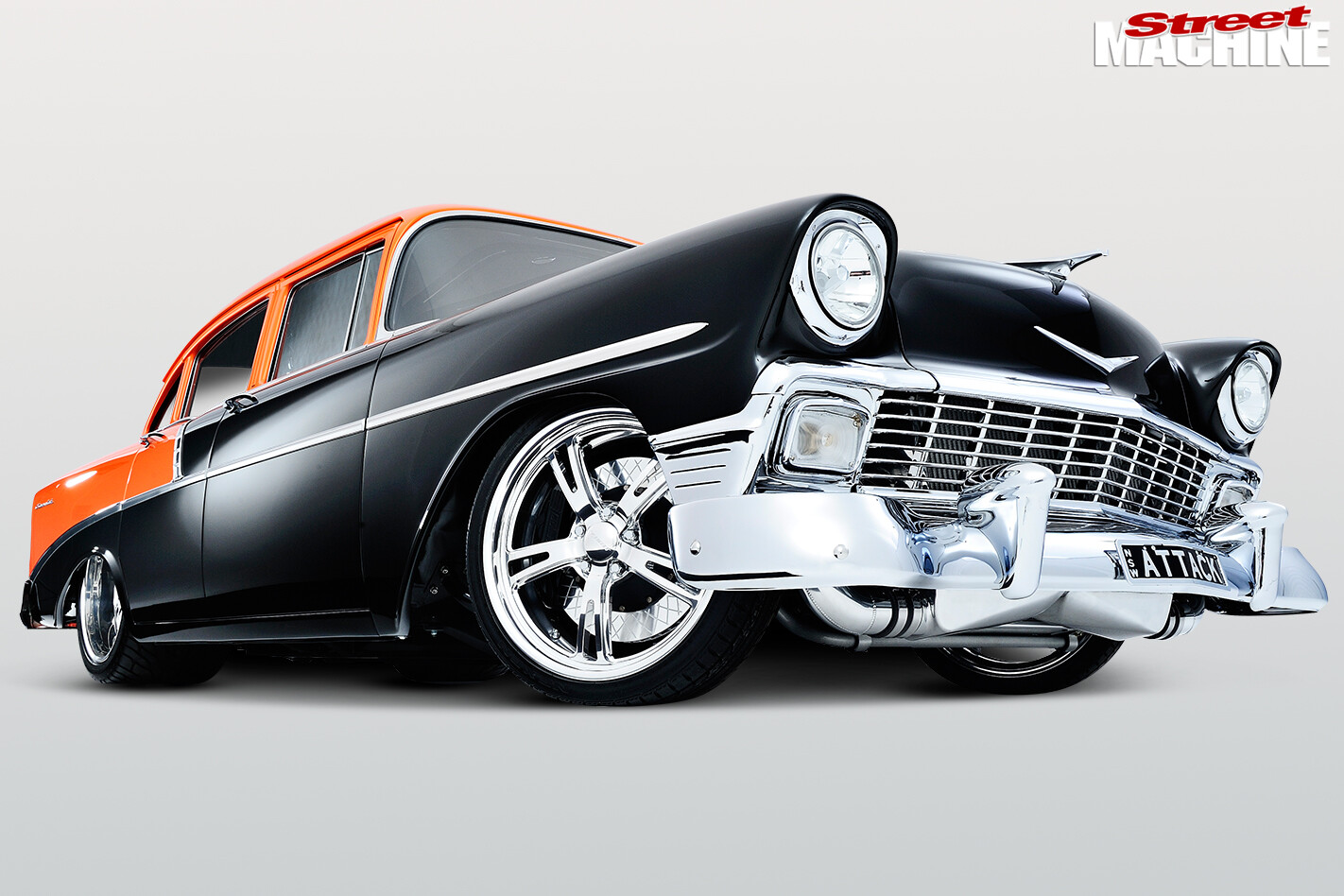 “USA Imports built the motor for me,” he explains. But it wasn’t only his ego that the turbo XD flogged — his motor came off second-best too. “I went back to see if it was under warranty and they wouldn’t fix it. Paul said: ‘Take it to my place and I’ll look after ya,’ and that’s how the friendship started.”
“USA Imports built the motor for me,” he explains. But it wasn’t only his ego that the turbo XD flogged — his motor came off second-best too. “I went back to see if it was under warranty and they wouldn’t fix it. Paul said: ‘Take it to my place and I’ll look after ya,’ and that’s how the friendship started.”
The turbocharged XD got the Pauls talking about going down the same route.
“I figured that if a turbo could do that to a six cylinder, what would it do to a V8?” Paul says. It’s a question few others were brave enough to consider in the 90s.
“People laughed at us, telling us it wouldn’t work,” he says. “We did a draw-through carby at the beginning, a set-up that I designed and fabricated myself to save money. It made power but it was very difficult to tune. So then we put injection on and it made 800hp at the wheels. We were still playing with it but it was too dangerous! I kept snapping 31-spline axles because every time I’d try to launch it I’d break something.”
Sant confirms that the twin-turbo V8 was so far ahead of its time that the technology of the era presented restrictions.
“When we started, EFI was nowhere so we went draw-through. When EFI did come around, it was hard to tune and a lot more basic than it is now.”
Even so, the boys had built a motor that far outstripped the HQ chassis so in 2001 the search started for a vehicle they could engineer to handle their twin-turbo big-block.
They visited an engineer to work out a combination that could take the grunt and be legally street-registered.
“He gave us options: a Toyota Crown, a ute or a Chevrolet. I liked the Chevy,” Souma says. So the search began but finding the perfect vehicle proved to be quite a task.
It turned up in Melbourne. “It’d sat in the owner’s mum’s garage for 15 years — he got married in Ireland. She rang him up and said: ‘Come back and sell your car.’ He came back, I saw the ad, paid him a deposit and took it.
“We started with the front graft and the firewall, to suit the engine and get the right rack as well as make more space so everything could be under-bonnet.”
But it didn’t take long for the project to spiral out of control, and soon a simple engine-swap wasn’t going to cut it.
“We had to buy a new block because we only had an iron block from the HQ. We went for the bigger Dart; we thought that 632 cubes wouldn’t have to work as hard to make the power.”
The turbos hanging off either side of the engine aren’t the newest units around but they’re more than capable of making the numbers.
“When we bought them, 90mm turbos were unheard off!” Sant says.
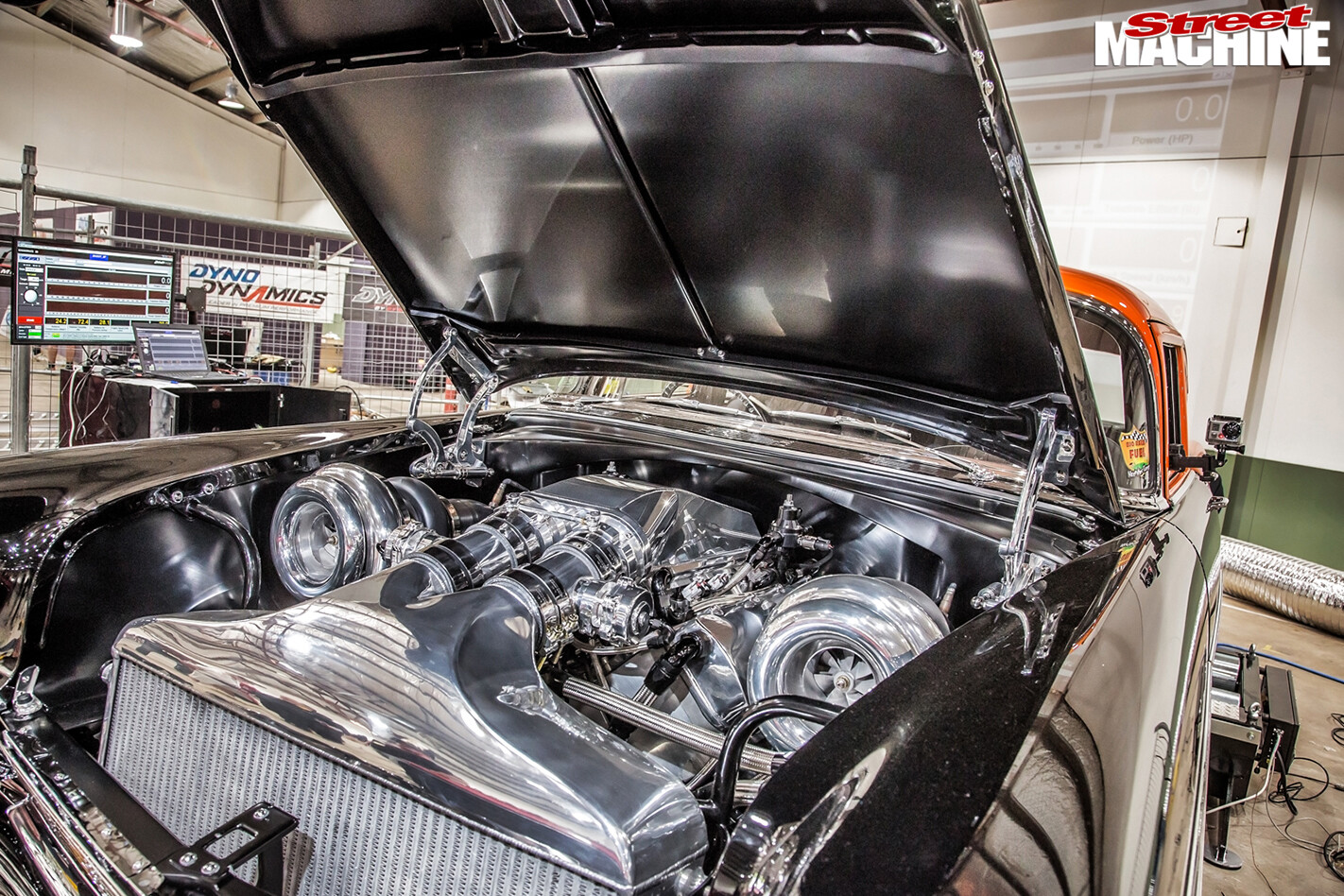 Rather than power, one of the biggest challenges was making the set-up driveable. “With the technology now, you can tune them pretty well,” Sant explains. “Everything is a balance because of the cubes but the plan is very much still to drive the car. On the street we’ll run it on pump fuel and then for big power we’ll run it on better stuff. It’ll have no problems cruising on pump thanks to the size of the engine.
Rather than power, one of the biggest challenges was making the set-up driveable. “With the technology now, you can tune them pretty well,” Sant explains. “Everything is a balance because of the cubes but the plan is very much still to drive the car. On the street we’ll run it on pump fuel and then for big power we’ll run it on better stuff. It’ll have no problems cruising on pump thanks to the size of the engine.
“Parts like the Big Brute gearbox with its overdrive were chosen specifically to make it easier on the street.”
With the bonnet closed, the vehicle looks true to its roots and that’s something Souma was adamant about throughout the build: “It had to look clean, with all the jewellery so it still looks like an original car, but with the power.”
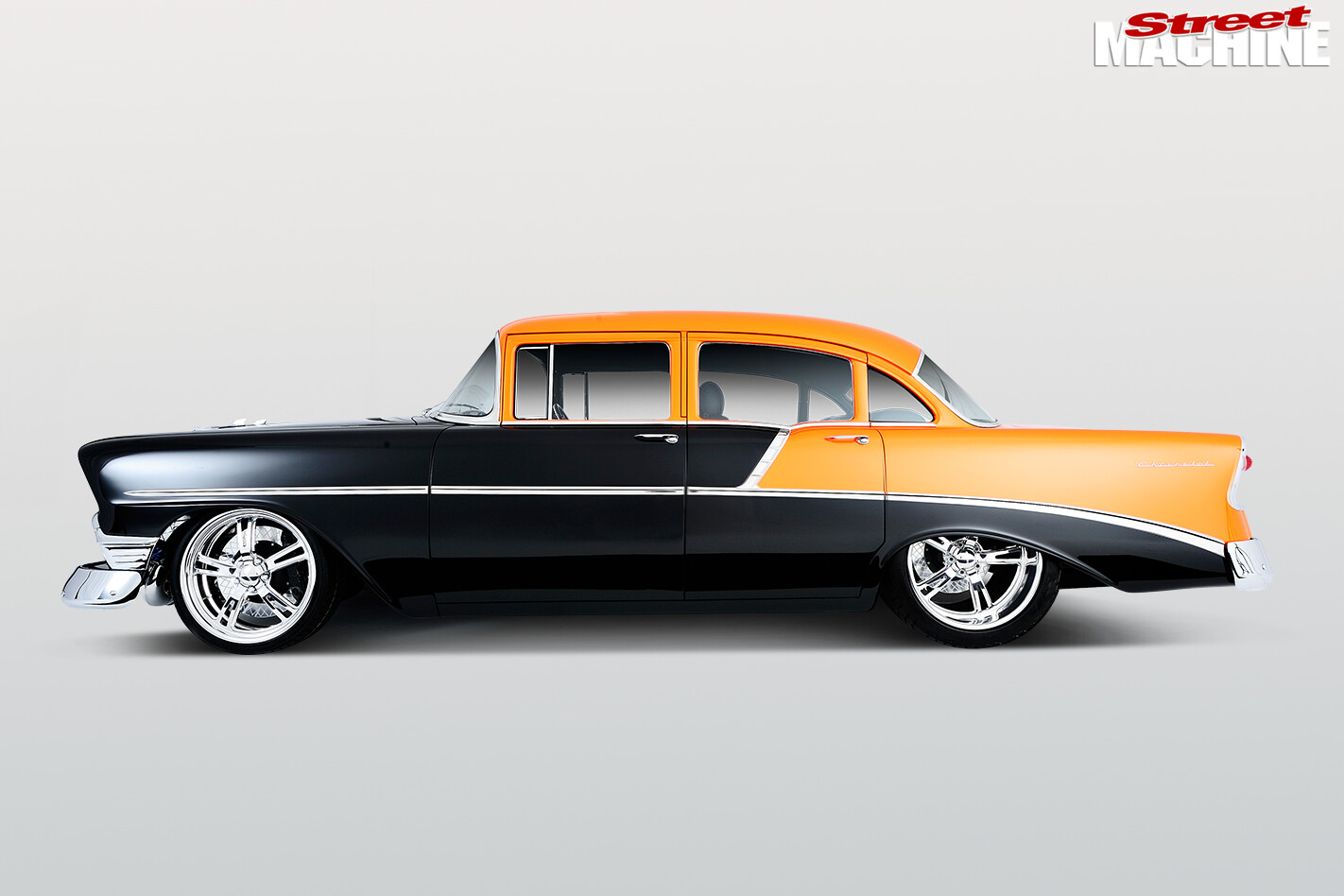 Body modifications were kept to a minimum but have maximum effect: “We extended the front doors and took out the strip that runs down from the B pillars. We also squared off the doors — it’s subtle but it looks more modern. Not everyone will notice but it helps get the car aligned.”
Body modifications were kept to a minimum but have maximum effect: “We extended the front doors and took out the strip that runs down from the B pillars. We also squared off the doors — it’s subtle but it looks more modern. Not everyone will notice but it helps get the car aligned.”
The colour scheme was a choice that — like many other parts of the build — relied on Sant’s vision and experience.
“I wanted black and silver but someone else did that. Paul swayed me to the black and orange.
“Off the gun I wasn’t happy! I thought: ‘We’ve made a mistake.’ The painter, Simon Bonello, told me later: ‘To tell you the truth, I didn’t really like it either!’ But once we started putting chrome on it, put the glass in, put the wheels on, the whole car changed.”
The interior is simple and elegant, lacking even a stereo to distract the driver and passengers from the pleasure of cruising.
“I enjoy the sound and the feel of the car; I don’t have to speed. There’s no radio because I just want to hear the engine. I just want to keep it clean and drive it, and when I’m in it have a conversation. Just cruise and enjoy the car,” Souma says.
Another benefit is that the 11-year journey has turned a great mechanic into a great friend: “I think of Paul Sant like a brother now.”
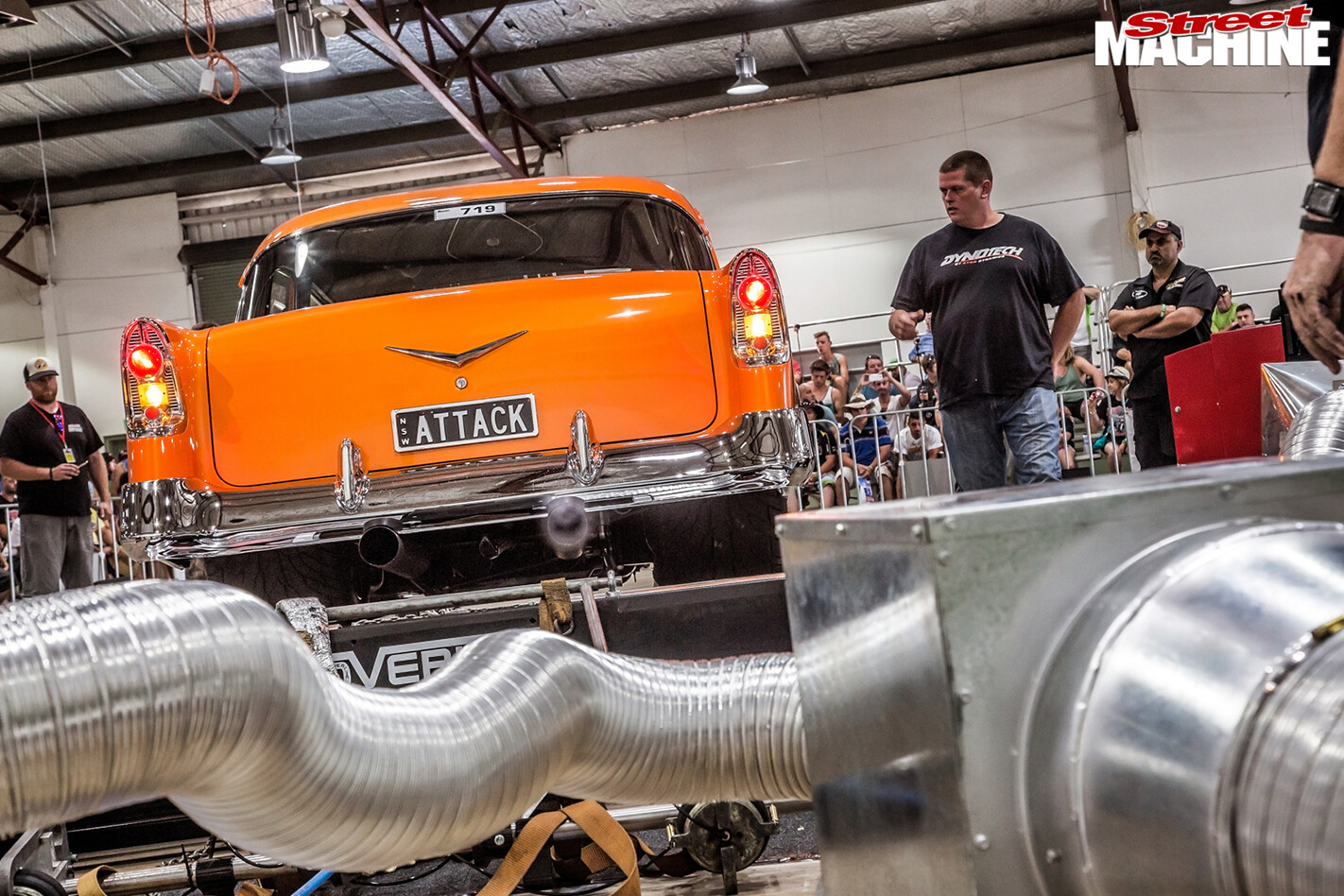 The car too has become a family member. “I told my daughter that I was thinking of selling it and she actually broke down in tears! When I got the car, my eldest daughter was three years old. They’ve grown up with the car and gotten photos with it.
The car too has become a family member. “I told my daughter that I was thinking of selling it and she actually broke down in tears! When I got the car, my eldest daughter was three years old. They’ve grown up with the car and gotten photos with it.
“We went four-door for the kids; it always had to be about family. Family comes first for me, which is why the car has taken 11 years to build.”
But for a cruiser the car has a pretty full schedule for the next 12 months.
“Chip Foose is coming to MotorEx 2013, so I want the car there and then it’s on to the engine dyno, then put it back in the car and go to Summernats 2014 — we’ll be looking for 2000hp at the wheels.”
SINCE THEN…
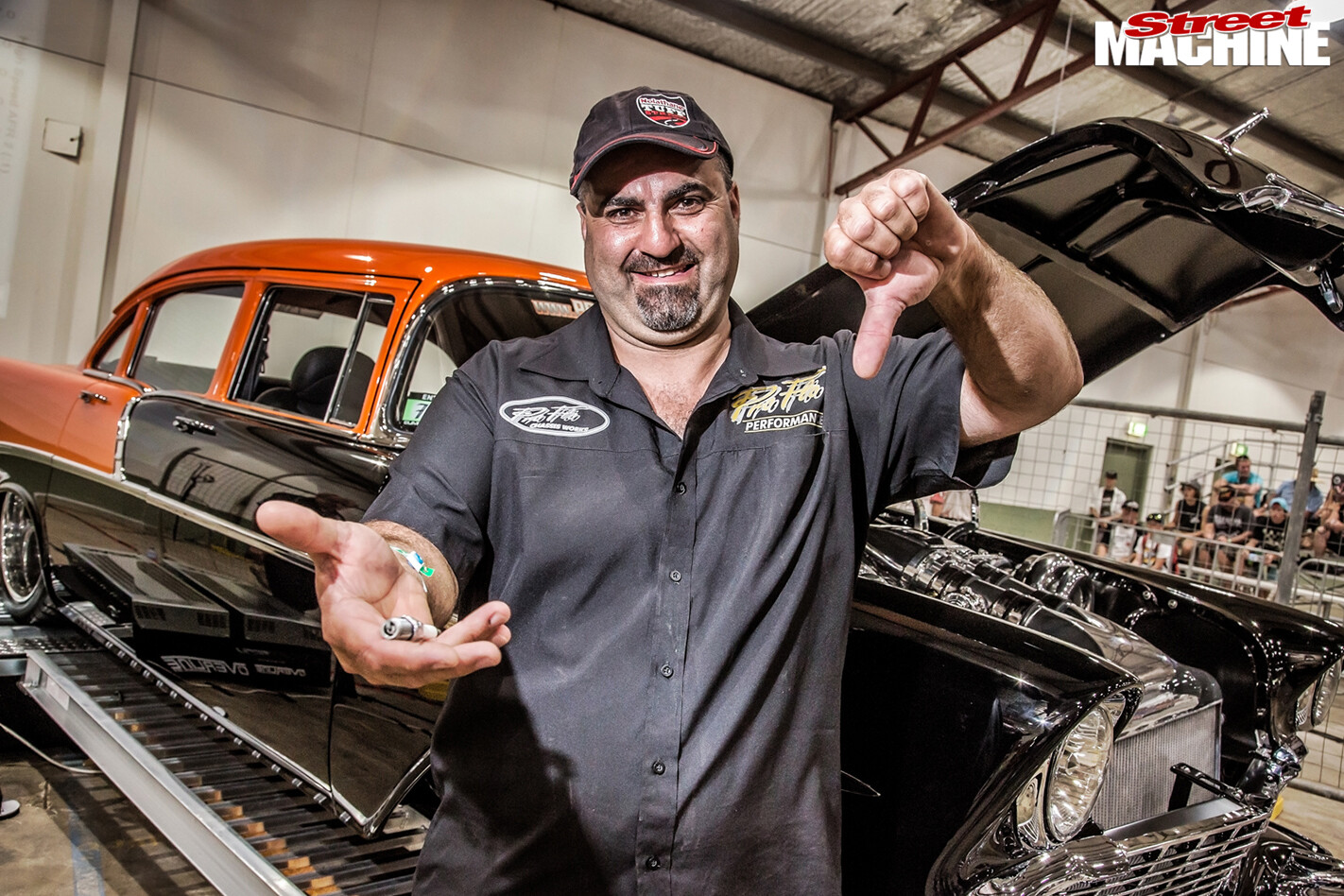 And yep, at Street Machine Summernats 28 the Chev gave that goal a good stab. It made 1977rwhp in testing prior to the event, but then pushed a sparkplug out early during Horsepower Heroes.
And yep, at Street Machine Summernats 28 the Chev gave that goal a good stab. It made 1977rwhp in testing prior to the event, but then pushed a sparkplug out early during Horsepower Heroes.
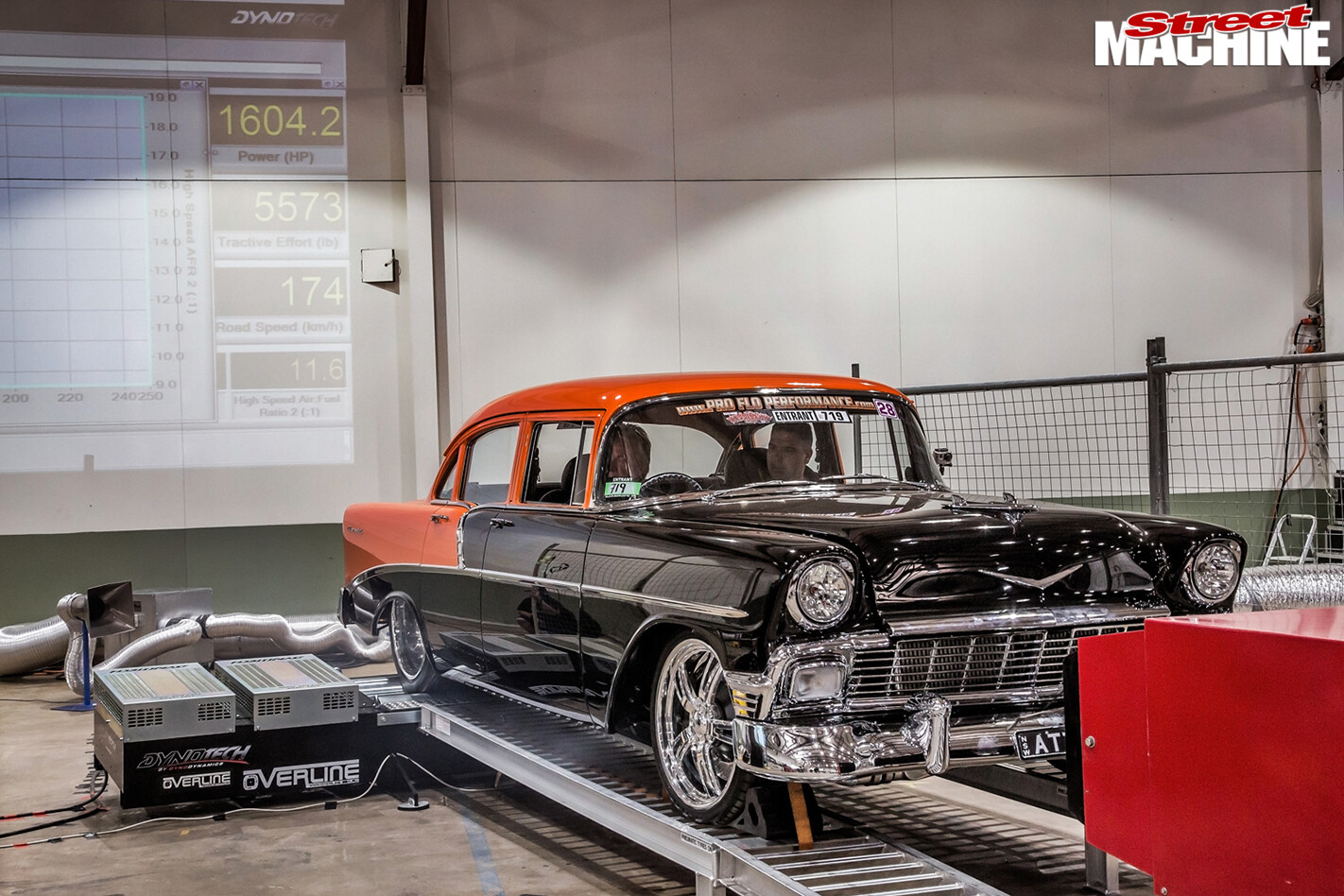 Thankfully, there was no damage and the car came back out and made a best of 1703rwhp in qualifying issues. Wastegate issues restricted them to a best of 1585rwhp in the finals, which was good enough for second place in Horsepower Heroes behind Jake Edwards’s LH Torana.
Thankfully, there was no damage and the car came back out and made a best of 1703rwhp in qualifying issues. Wastegate issues restricted them to a best of 1585rwhp in the finals, which was good enough for second place in Horsepower Heroes behind Jake Edwards’s LH Torana.
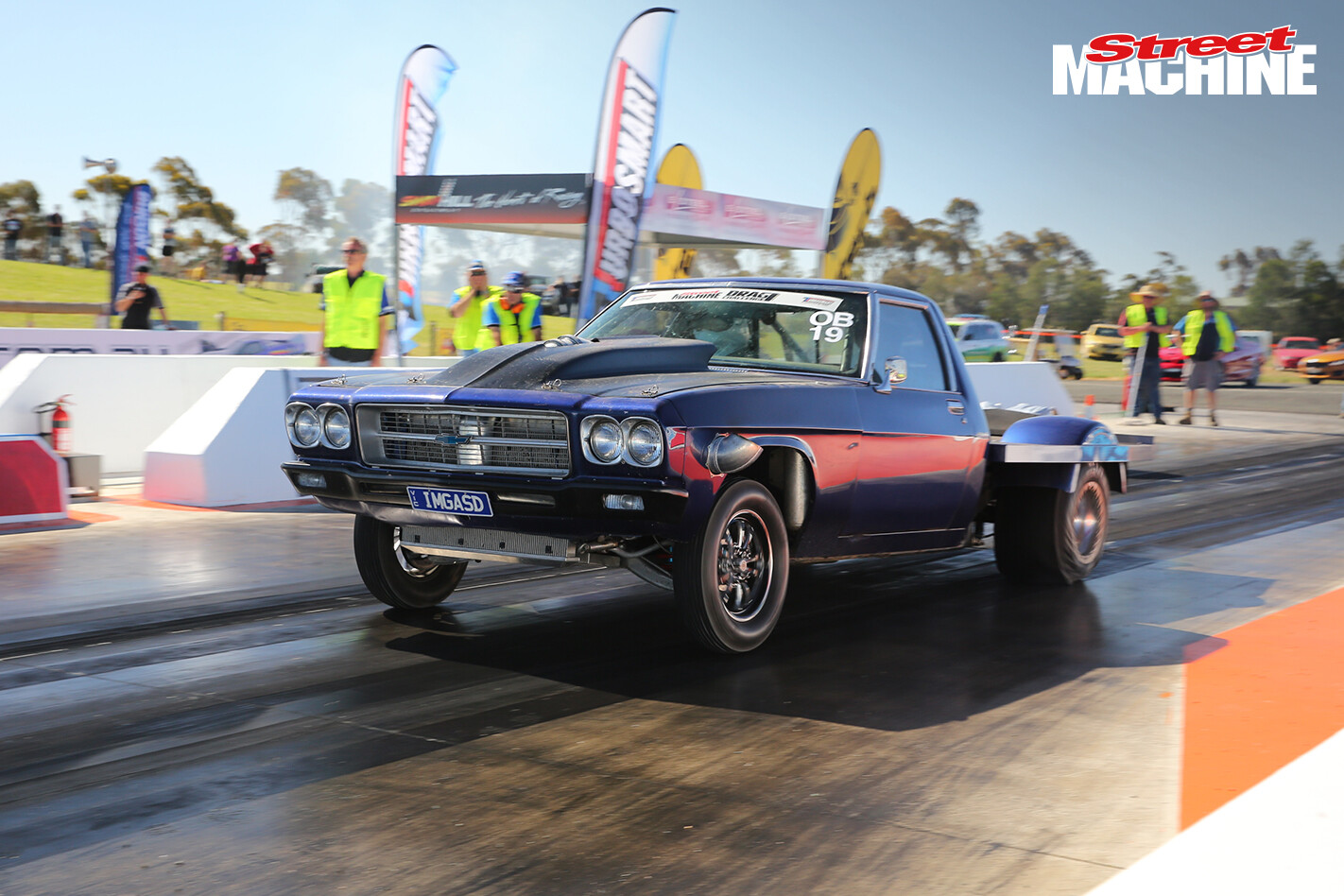
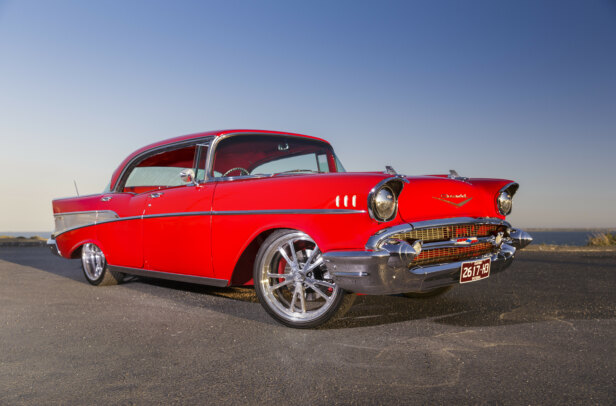
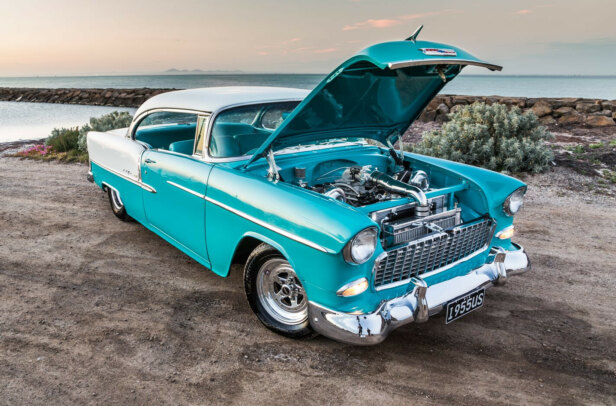
Comments